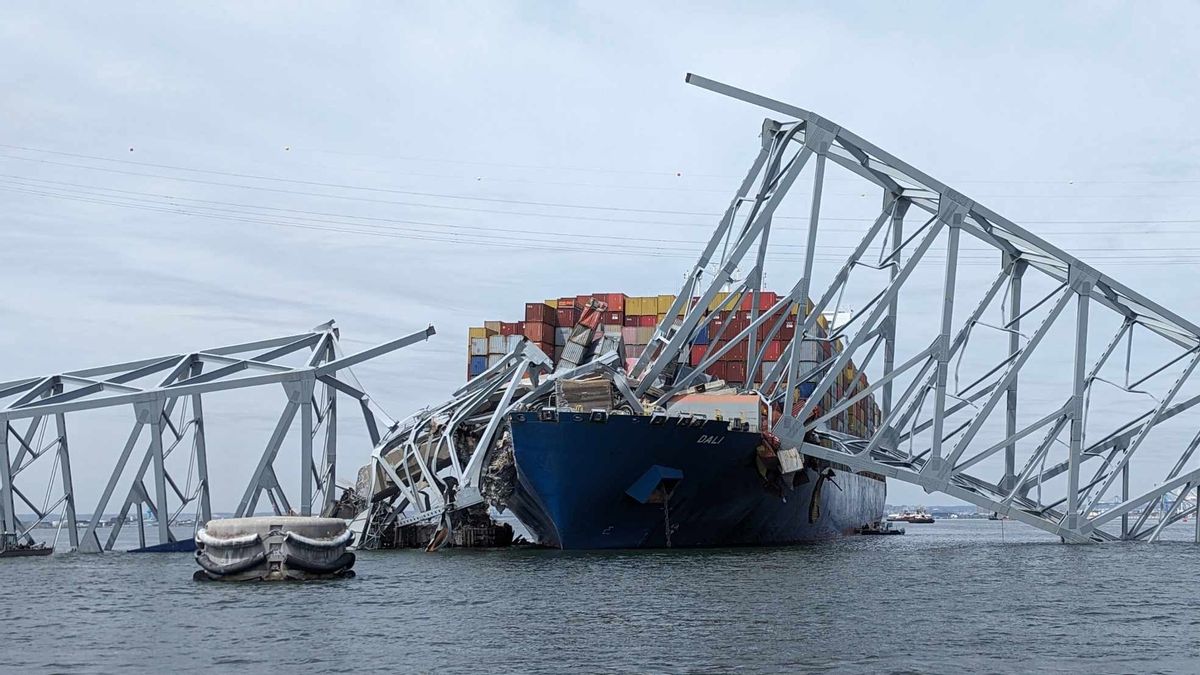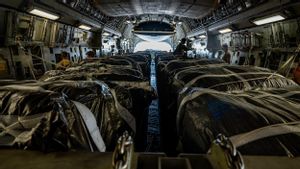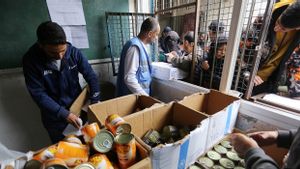Six workers were missing and are thought to have died as a result of a bridge that collapsed at Baltimore Harbor on Tuesday morning, after a large cargo ship crippled by a power outage hit the bridge structure, forcing the closure of one of the busiest ports on the US East Coast.
The Singapore Dali-flagged container ship, departing from Baltimore Harbor to Sri Lanka, hit the buffer pole of the Francis Scott Key Bridge above the mouth of the Patapsco River at around 1:30 a.m. local time.
Part of the 1.6-mile bridge, or about 2.57 km long, collapsed into ice-cold water, causing vehicles and people to fall into the river.
Rescue teams rescued two survivors, one of whom was hospitalized. Those and the six missing people were part of a work crew that repaired a hole on the surface of the bridge road, officials said.
When a team of divers faced increasingly dangerous conditions in the darkly populated waters of debris, active search and rescue operations were halted about 18 hours after the crash, US Coast Guard officials and Maryland State Police said.
Rear Admiral Shannon Coast Guard Gilreath said there was no hope of finding the missing worker alive, due to the very cold water temperature and the length of time that had passed since the accident.
Meanwhile, State Police Colonel Roland Butler said authorities hoped to return the divers to the waters after sunrise on Wednesday in a bid to find the bodies of the workers.
The 948-foot (288.95 m) ship suffered a moment of loss of propulsion and dropped its anchor as part of an emergency pre-collision procedure, its management company Synergy Marine Pte Ltd reported, according to the Singapore Port Authority.
Dali, belonging to Grace Ocean Pte Ltd, hit one of the bridge pillars, according to Synergy. The entire 22 crew members on the ship have been inspected, he said.
The ship reported power outages prior to the collision, which allowed officials to stop traffic on the bridge before it collapsed.
"By being able to stop the car that crossed the bridge, these people were heroes. They saved lives last night," Maryland Governor Wes Moore said at a mid-day press conference, saying the bridge was in accordance with the provisions and no structural problems were known.
Meanwhile, US Transport Secretary Pete Buttigieg said closing one of the busiest cruise lines in the US until further notice would have a major and protracted impact on the supply chain.
Baltimore Port handles more car cargo than other US ports, more than 750,000 vehicles by 2022, according to port data.
In addition to impacting car shipments, port closures can force goods senders to transfer Baltimore cargo to containers to bulk materials. This can create congestion and increase delays and costs in the Eastern coastal region, experts say.
Another impact, more than 40 ships are still inside the Baltimore port including small cargo ships, tugboats, and cruise ships, according to data from ship tracking providers and MarineTraffic maritime analysis. Meanwhile, another 30 ships have signaled their goal is Baltimore.
Separately, President Joe Biden said the US Coast Guard responded quickly to an emergency call, praising the swift action of Maryland transport officials who closed the bridge before the bridge was hit.
SEE ALSO:
"I directed my team to move the sky and earth to reopen ports and rebuild bridges as quickly as possible," President Biden said.
Opened in 1977, the bridge served as the main highway for motorists between New York and Washington who wanted to avoid the downtown Baltimore. This is one of three ways to cross ports, with a traffic volume of 31,000 vehicles per day, or 11.3 million per year.
The disaster that occurred on Tuesday may have been the worst bridge collapse in the US since 2007, when the I-35W bridge in Minneapolis collapsed into the Mississippi River, killing 13 people.
The English, Chinese, Japanese, Arabic, and French versions are automatically generated by the AI. So there may still be inaccuracies in translating, please always see Indonesian as our main language. (system supported by DigitalSiber.id)


















